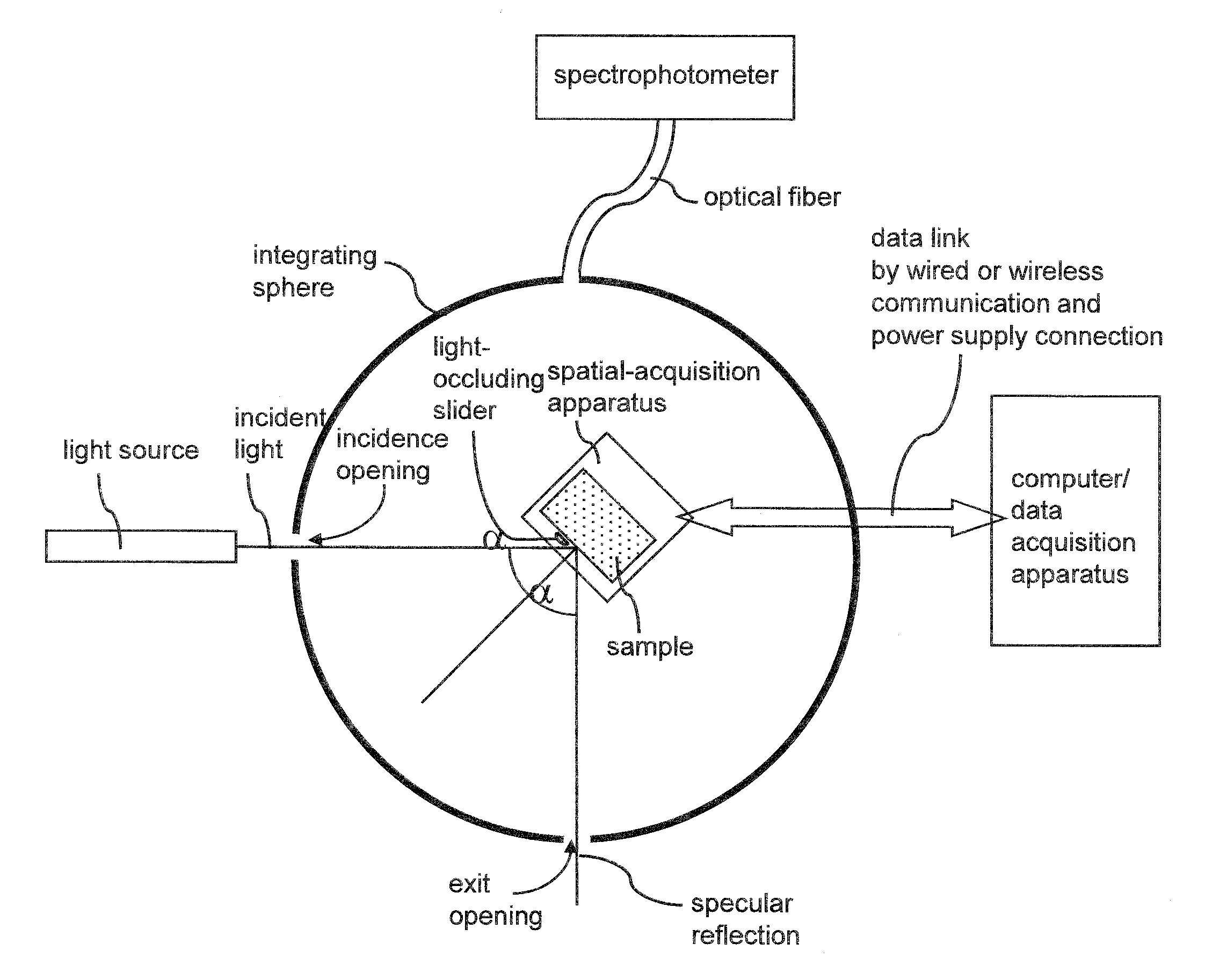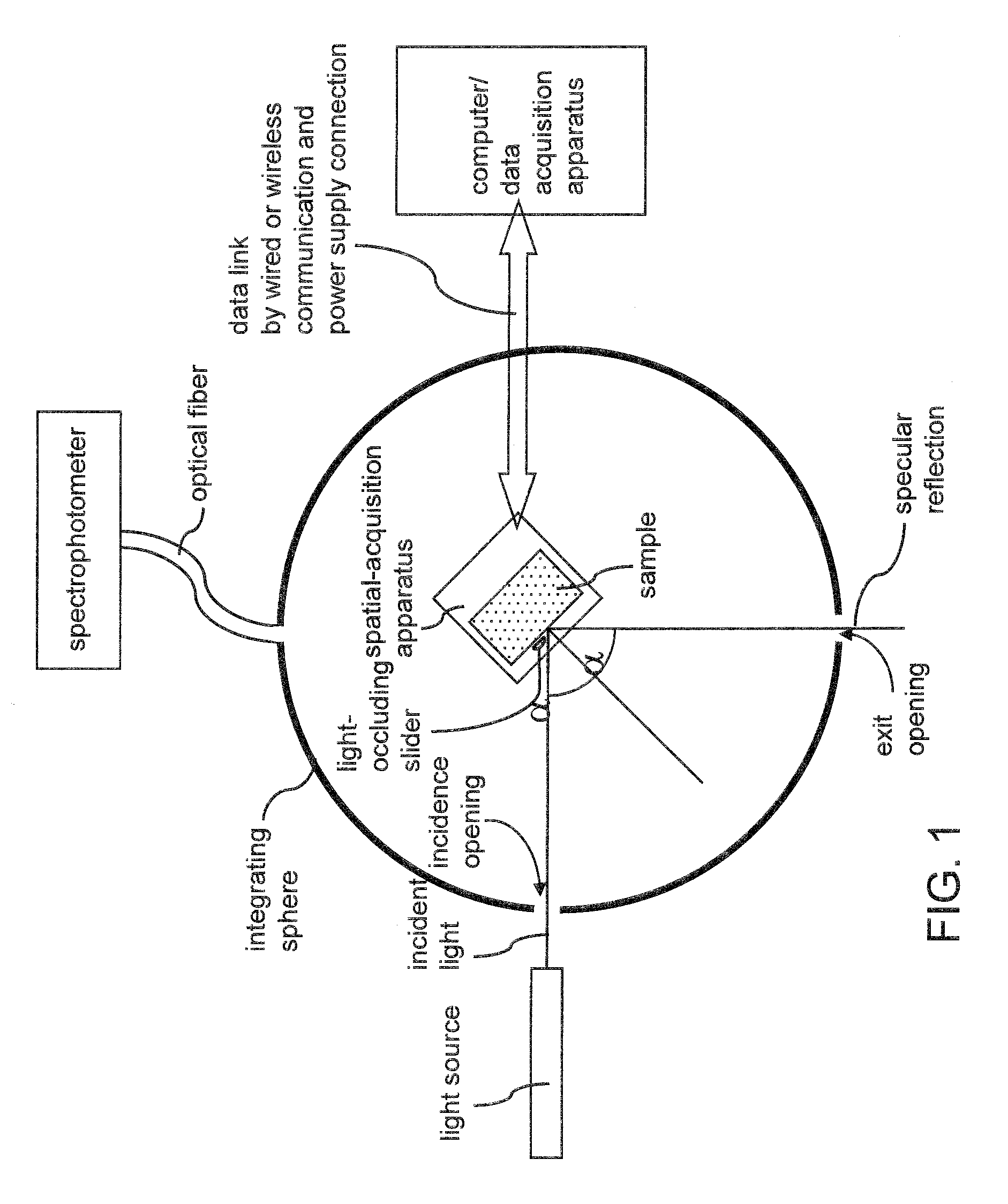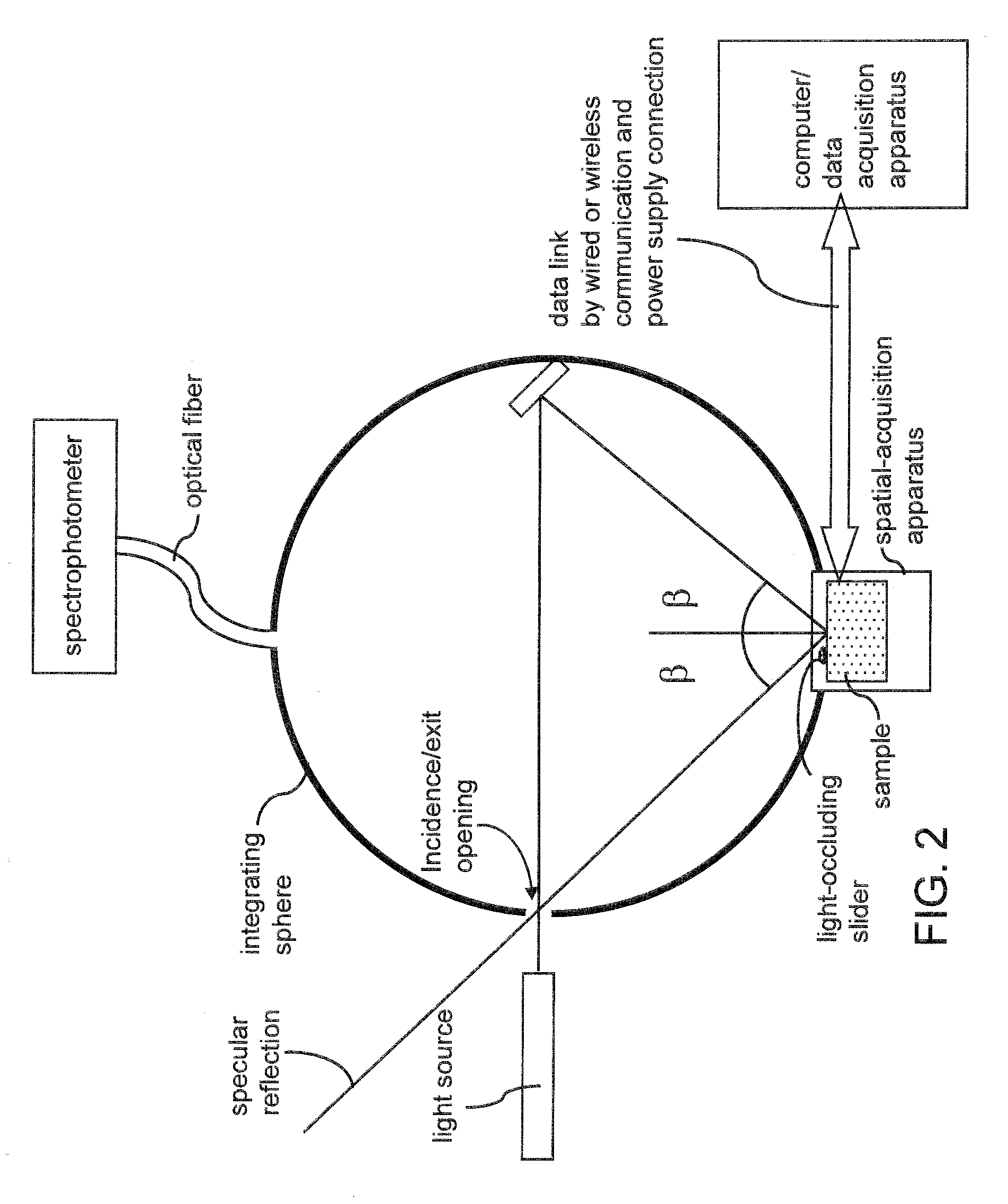Determining biological tissue optical properties via integrating sphere spatial measurements
a spatial measurement and optical property technology, applied in the field of optical instruments, can solve the problems of destroying all spatial information from a sample, no way of determining spatial data within an integrating sphere, and the limitations of the integrating sphere currently available, and achieve the effect of readily determining the optical properties of biological tissu
- Summary
- Abstract
- Description
- Claims
- Application Information
AI Technical Summary
Benefits of technology
Problems solved by technology
Method used
Image
Examples
Embodiment Construction
[0036]As stated above, the present invention relates to an optical apparatus, a method of operating the same, and a program to perform the operation of the same. The present invention is now described in detail with accompanying figures. It is noted that like and corresponding elements mentioned herein and illustrated in the drawings are referred to by like reference numerals.
[0037]Referring to FIGS. 1 and 2, a first exemplary optical apparatus and a second exemplary optical apparatus are shown, respectively, in a horizontal cross-sectional view. Each of the first and second exemplary optical apparatus includes an enclosure having a reflective inner surface, a spatial-acquisition apparatus configured to hold a sample on a front side, a light source, a light-occluding slider, a spectrophotometer, a linear motion controller (not shown in FIGS. 1 or 2), a computer, a data acquisition apparatus, and peripheral devices configured to provide data link by wired or wireless communication an...
PUM
| Property | Measurement | Unit |
|---|---|---|
| height | aaaaa | aaaaa |
| height | aaaaa | aaaaa |
| diameter | aaaaa | aaaaa |
Abstract
Description
Claims
Application Information
 Login to View More
Login to View More - R&D
- Intellectual Property
- Life Sciences
- Materials
- Tech Scout
- Unparalleled Data Quality
- Higher Quality Content
- 60% Fewer Hallucinations
Browse by: Latest US Patents, China's latest patents, Technical Efficacy Thesaurus, Application Domain, Technology Topic, Popular Technical Reports.
© 2025 PatSnap. All rights reserved.Legal|Privacy policy|Modern Slavery Act Transparency Statement|Sitemap|About US| Contact US: help@patsnap.com



